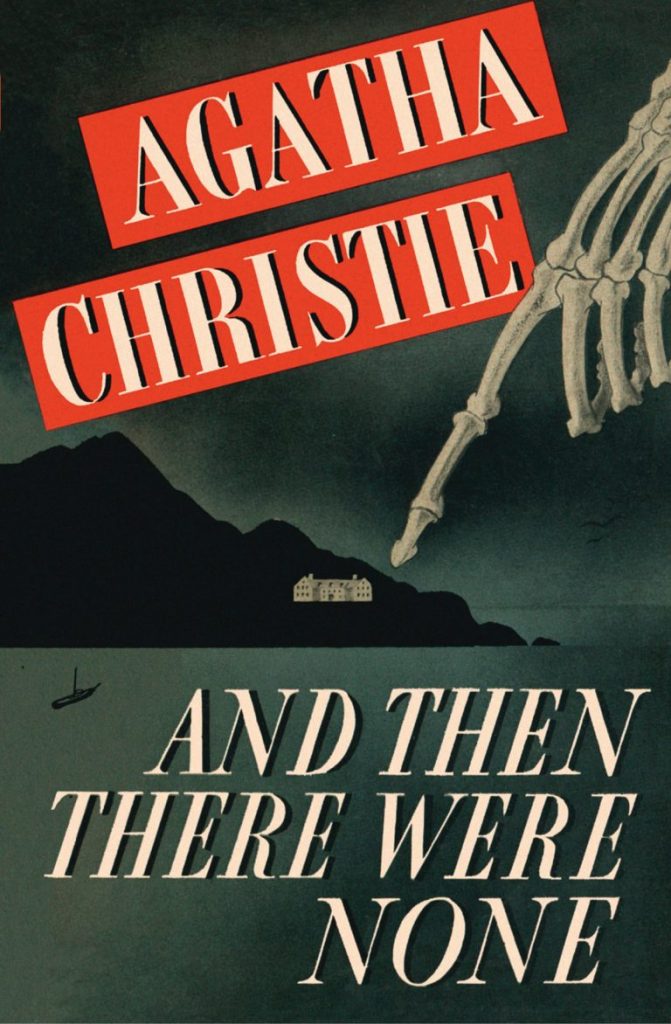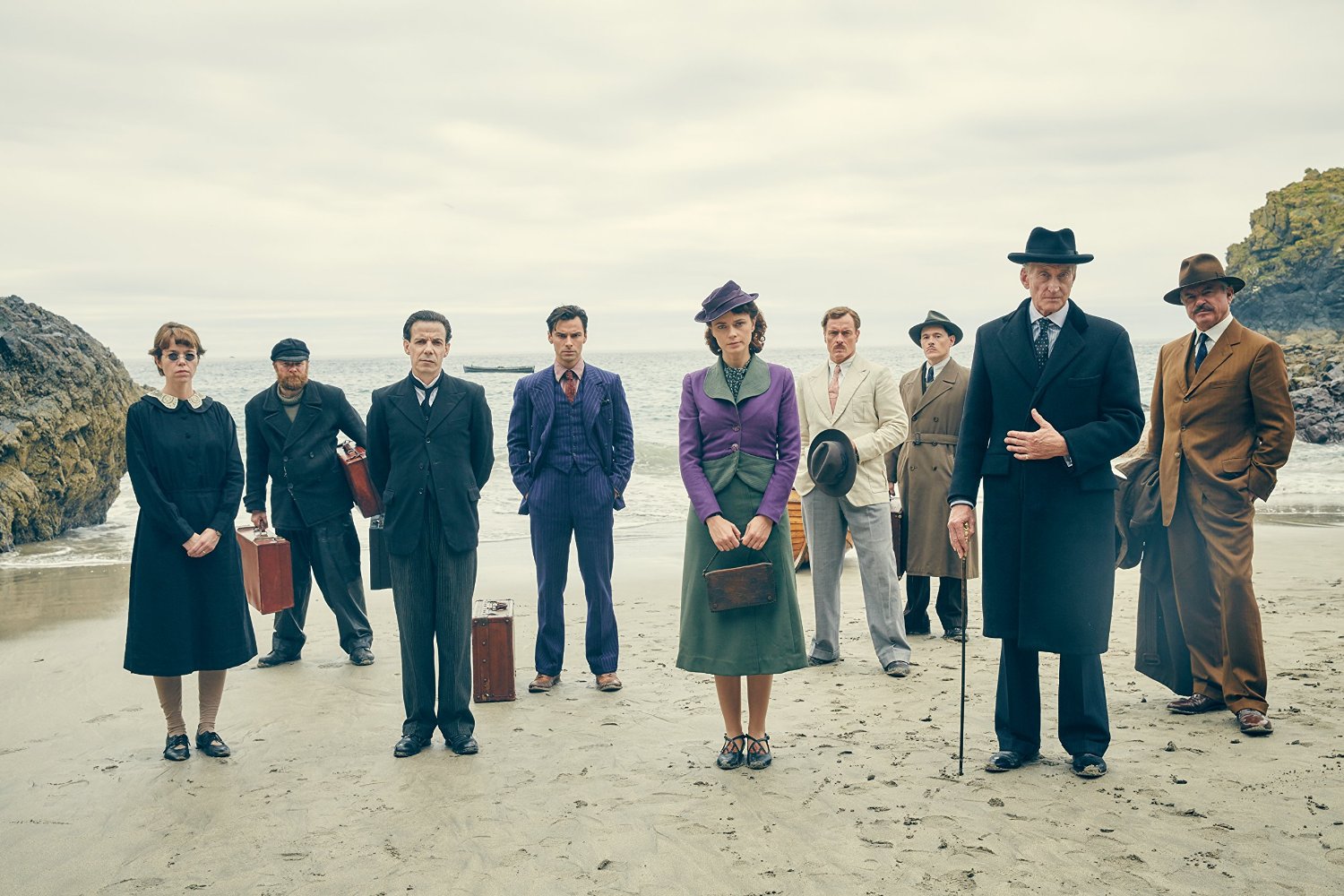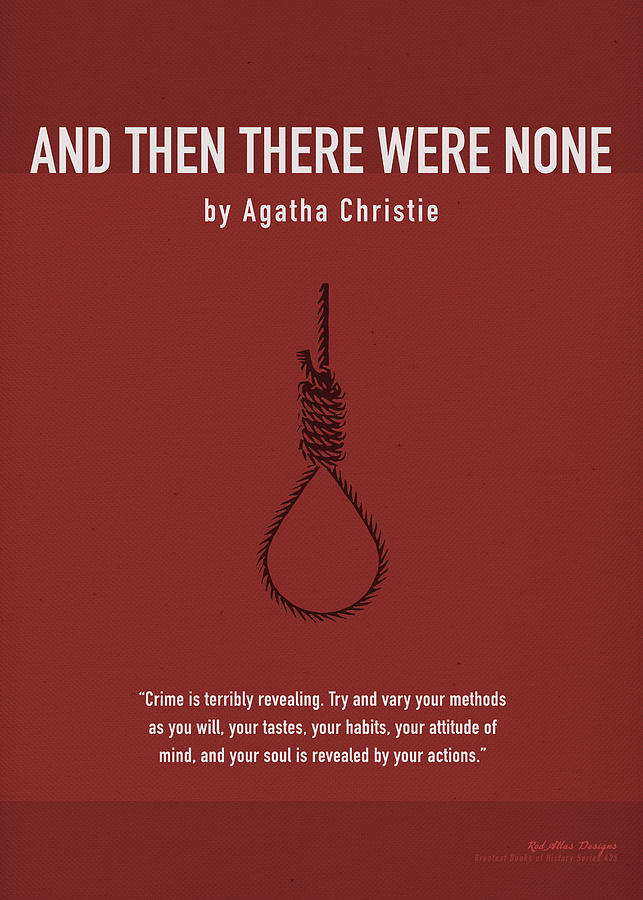
Please also note that recorded gun shots and brief flashing lights form part of the production.Reference to, and depictions of, murder, manslaughter and suicide by hanging.We don’t want to spoil anyone’s experience of coming to see And Then There Were None, however, if you would benefit from knowing more about specific content and themes in the play, please see below:

“ None of us will ever leave this island”ĭirected by Lucy Bailey ( Witness for the Prosecution, now in its 6 th year in London ) this brand-new production of the bestselling crime novel of all time will keep you on the edge of your seat… Genuinely terrifying….ĭon’t miss Agatha Christie’s And Then There Were None, coming to the Gaiety Theatre. The novel’s ingenious plotting, impactful endings, and complex characterization showcase Christie’s talent and earned her the title Queen of Mystery. Agatha Christie opens And Then There Were None with a shifting point of view unusual in the mystery genre. It was also performed under the name Ten Little Indians. The play, like the 1939 book on which it is based, was originally titled and performed in the UK as Ten Little Niggers. When a storm cuts them off from the mainland, the true reason for their presence on the island becomes horribly clear. The story of ‘And Then There Were None’ significantly advances Agatha Christie’s reputation as a pioneering and influential mystery writer. And Then There Were None is a 1943 play by crime writer Agatha Christie. Agatha continued writing into old age and wrote 66 novels and 153 short stories in total.Ten strangers are lured to a solitary mansion off the coast of Devon. Some of her most famous titles include Murder on the Orient Express, Mystery of the Blue Train, And Then There Were None, 13 at Dinner and The Sittaford Mystery. She developed a great interest in archaeology and Egyptology. A PBS Great American Read Top 100 Pick One of the most famous and beloved mysteries from the queen of suspense, Agatha Christie More than 100 million. In 1939 Agatha married archaeology professor Max Mallowan and traveled with him on many trips.

They divorced in 1928 and Agatha retained custody of their one child, Rosalind. Agatha ran away after this and was found days later registered at a hotel under her husband's mistress's name. In 1926, Agatha published her first big hit: The Murder of Roger Ackroyd, but in the same year her mother died and her husband left her for his secretary. Agatha published her first novel in 1920, which introduced her longest running and possibly most famous detective character, Hercule Poirot. Archie went away to fight in World War I and Agatha helped the wounded soldiers back in England as a part of the Voluntary Aid Detachment (VAD). At the same time she was looking for a husband, and after a few failed relationships, met Archibald “Archie” Christie in 1912 and the two were married soon after. Agatha began writing after finishing school but could not get anything published.

After her father's death she was sent to receive a formal education first in her native town of Torquay and then in Paris. Agatha was the youngest of three children and had a happy early life but her father died of a heart attack when she was only 11, and she later said that this marked the end of her childhood. Well-Plotted: The author of 'And Then There Were None' Agatha Christie is known as 'The Queen of Mystery.'Christie has written some of the most famous who-done-its ever written like 'Murder on the Orient Express' and 'The A.B.C Murders'. Justice Wargrave understands the power of personal guilt as shown by the fact that he guesses Vera will kill herself when she is the last one left on the island. The majority of the characters in the novel are people who have escaped the latter but are plagued by the former.

Her mother was British and her father was a wealthy American stockbroker educated in Switzerland. And Then There Were None presents two kinds of guilt: personal and legal. Agatha Christie was born into an upper middle class family in South West England.


 0 kommentar(er)
0 kommentar(er)
